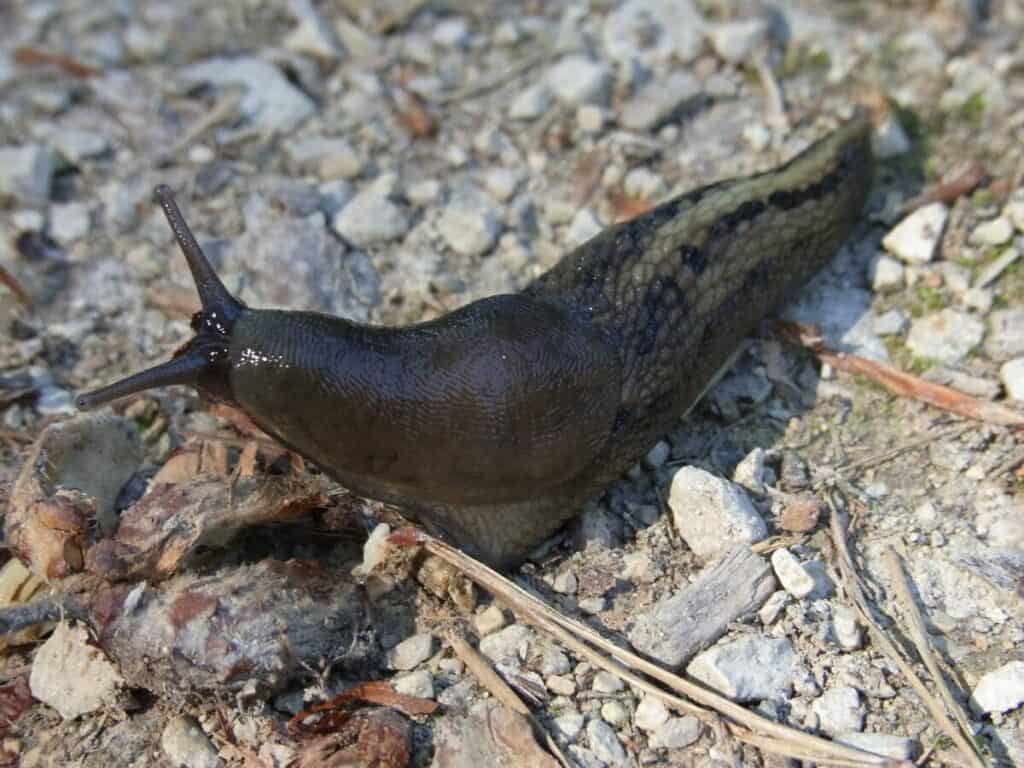Are slugs wreaking havoc in your garden? This article will provide you with the essential information you need to understand and combat these pesky pests.
Slugs are slimy creatures that can cause significant damage to your plants, leaving behind chewed leaves and slime trails. You can keep slugs away from your vegetable garden by recognizing them and using prevention methods..
What are slugs?
Slugs are mollusks belonging to the class Gastropoda. They’re soft-bodied creatures with a slimy excretion that allows them to move easily.
Slugs vary in size, but most commonly measure between one to two inches. They’ve a distinct body shape, featuring a muscular foot, tentacles, and a slimy mantle.
Slugs are nocturnal and feed on plant material, causing damage to leaves, stems, and fruits.
What damage do slugs cause on plants?
Slugs feed on plant material, causing damage to leaves, stems, and fruits.
They chew irregularly shaped holes in the foliage and cause major damage to young plants. Slugs also leave behind slimy trails of excretion that can be unappealing.
How to identify slugs on plants

Slugs feed on a variety of plant material, leaving behind distinctive slime trails and irregular holes in leaves.
To identify slugs, look for their slimy trails and examine the leaves for chewed edges and irregularly shaped holes. They are nocturnal, and you should be able to see them moving on your plants at night.
Read more:
How to get rid of slugs
Handpick: You can handpick slugs at night using a flashlight or headlamp. Place them in a container of soapy water to kill them.
Insecticidal soap: This solution kills slugs by suffocating them and disrupting their cell membranes. You can safely use it on most plants and apply it directly to the affected areas..
Beneficial nematodes: Beneficial nematodes are microscopic roundworms that you can apply to the soil and will feed on slugs, killing them naturally.
Slug pellets: Apply them around your plants and near areas where you have seen slugs. Be sure to follow the instructions on the packaging for safe use.
Beer trap: You can use beer traps or boards to attract and capture slugs. Bury a shallow container filled with beer in the garden soil and check it in the morning for trapped slugs.
Read more:
How to prevent slugs on plants
You could use row covers on some small plants like leafy greens to prevent slugs from reaching them. But at some point, vegetable plants will have slugs in them.
It’s best to monitor your plants every day and check for signs of slugs such as slime and chewed leaves. You can then take the necessary action to get rid of them.
Host vegetable plants for slugs
Some vegetable plants that slugs like to infest include lettuce, spinach, cabbage, and other leafy greens. Slugs also like to feed on fruits such as strawberries and melons.
Natural predators of slugs
Some natural predators of slugs include hedgehogs, ground beetles, toads, and some birds. These animals feed on slugs and help to keep their populations in check.
References
- https://en.wikipedia.org/wiki/Slug
- https://extension.umn.edu/yard-and-garden-insects/slugs
- https://www.almanac.com/pest/slugs-and-snails

Fact Checked, Written, and Published by Kevin Rodrigues
Kevin is the founder of Gardening Mentor, a website that aims to teach people to grow their own food in a limited space. As a self-taught gardener, Kevin has spent several years growing plants and creating gardening content on the website. He is certified in Home Horticulture and Organic Gardening from Oregon State University. He has a Post Graduate Diploma in Horticulture and Landscape Gardening from Mumbai University.
Read more
